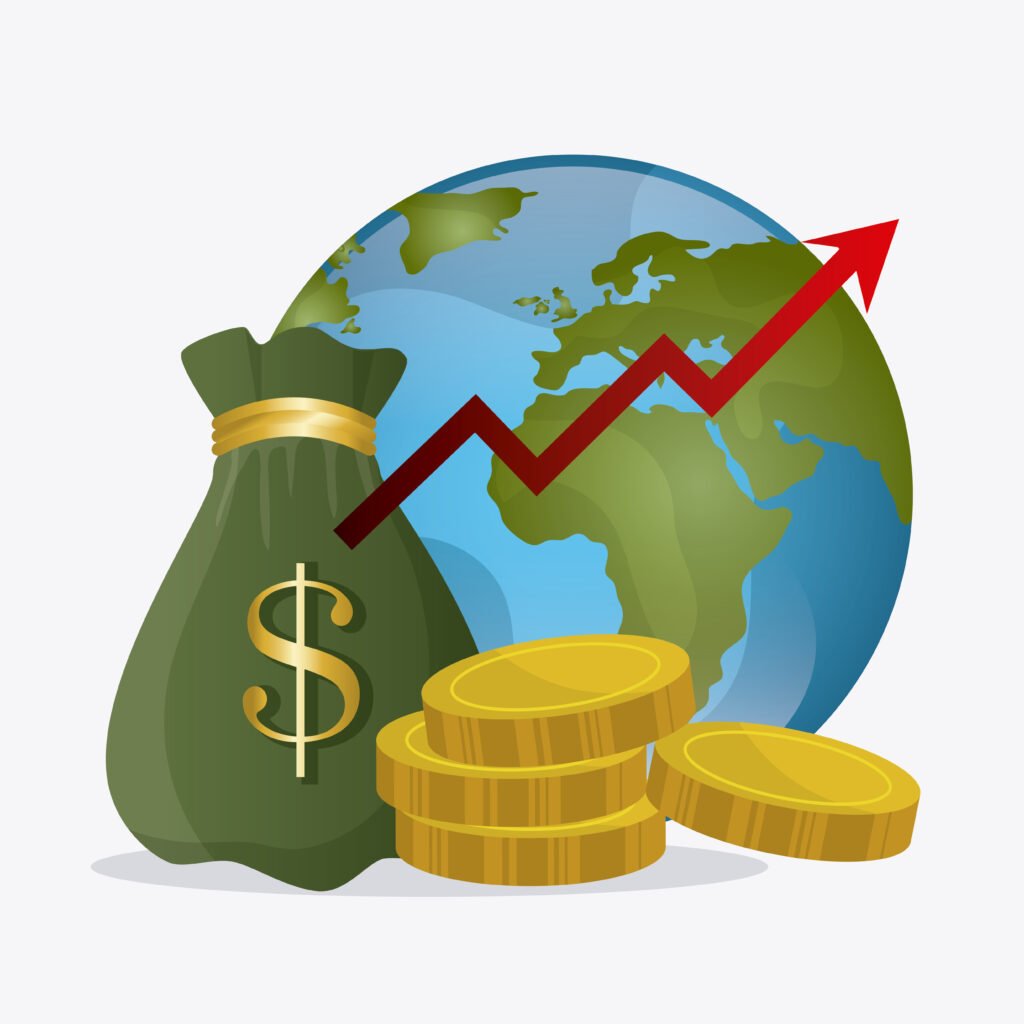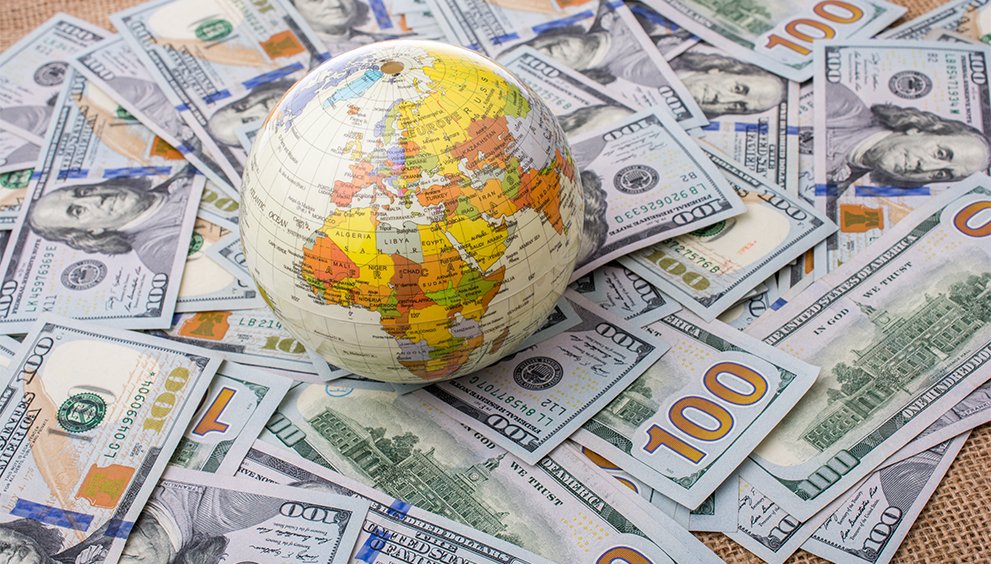The Role of the Federal Reserve in Global Financial Stability

Once in a while, you will see headlines like “Fed officials flag rising inflation risks’ or “US Federal Reserve cuts key interest rates by 0.25%,” injecting market volatility into the global currency markets. The Federal Reserve (often referred to as the Fed) serves as the central banking system of the United States, pivotal not merely in ensuring domestic economic stability but in profoundly influencing global financial systems. As the issuer of the US dollar—the predominant currency utilised in global trade, finance, and reserves—the decisions and policies formulated by the Fed resonate far beyond American borders, shaping international markets and impacting diverse aspects ranging from currency exchange rates to the broader dynamics of global economic growth.
This article delves into the Federal Reserve’s multifaceted contributions to global financial stability, examining its tools and the cascading effects of its decisions on economies worldwide.
The Federal Reserve’s Mandate and Its Global Reach
The Federal Reserve operates under a well-defined mandate with primary objectives that are crucial for the United States and international financial health. These objectives include:
- Price Stability: Striving to maintain inflation at manageable and predictable levels, which supports consumer purchasing power and overall economic confidence.
- Maximum Employment: Aiming to ensure robust labour market conditions that foster job creation and support economic activity both domestically and abroad.
- Financial Stability: Actively working to prevent systemic risks that could potentially precipitate financial crises, which can have devastating effects globally.
Although the overarching aim of the Fed’s policies is to bolster the US economy, their implications extend significantly into foreign markets. The status of the US dollar as the world’s primary reserve currency means that the Federal Reserve’s decisions shape financial conditions globally, influencing everything from international trade dynamics to capital flows among diverse nations.
The Federal Reserve’s Influence on Global Financial Stability
A. Impact on Global Currency Markets
The US dollar plays a central role in global finance, accounting for nearly 60% of all foreign exchange reserves and serving as the primary currency for international transactions. Consequently, any alterations in the Fed’s interest rate policies have real ramifications for the strength of the US dollar. Example: In 2022, the Fed’s aggressive stance in raising interest rates to combat persistent inflation led to a marked appreciation of the US dollar. This scenario imposed significant pressure on emerging markets such as India, Turkey, and Argentina, where local currencies depreciated in response, making imports more costly and driving domestic inflation rates higher.
B. Federal Reserve as a Lender of Last Resort
In periods of financial turmoil, the Fed acts as a global lender of last resort, extending liquidity to economies grappling with financial distress. This function is crucial, enabling countries to stabilise their financial markets during crises.
- The 2008 Global Financial Crisis: The Fed initiated swap lines with foreign central banks, effectively providing US dollars to aid in stabilising global financial markets.
- The 2020 COVID-19 Pandemic: The Fed expanded emergency dollar liquidity programmes to major global economies, ensuring that financial markets did not collapse under the weight of a sudden dollar shortage.
US Interest Rate Policy and Global Debt Markets
Each time the Fed raises interest rates, the ripple effect is felt worldwide; borrowing costs increase, leading to capital outflows from emerging markets as investors are drawn to higher returns in the US.
Example: The “Taper Tantrum” of 2013 serves as a noteworthy incident when the Fed hinted at slowing down its bond-buying programme. The announcement triggered a sharp sell-off in emerging market assets, resulting in currency depreciations and financial instability in nations such as Brazil, South Africa, and Indonesia.
The Fed’s Role in Inflation Control and Market Stability
The failure of the Federal Reserve to effectively control inflation within the US can have broad repercussions globally, leading to significant volatility in commodity prices and economic conditions worldwide.
Example: In 2022, a delayed response from the Fed to surging inflation rates resulted in skyrocketing energy prices, impacting nations heavily reliant on dollar-denominated imports of essential commodities, such as oil.
The Federal Reserve’s Tools for Global Stability
The Federal Reserve utilises a suite of instruments aimed at managing economic conditions domestically while maintaining global stability. Key tools include:
A. Federal Funds Rate (Interest Rate Policy)
When the Fed raises interest rates, it fortifies the US dollar and attracts global investors. However, this approach can increase borrowing costs for other economies, often stifling growth. Conversely, lowering rates can stimulate economic growth but potentially weaken the dollar, complicating global trade dynamics.
B. Quantitative Easing (QE)
During economic crises, the Fed employs quantitative easing to inject liquidity into the financial system by purchasing government bonds, stabilising markets and promoting investor confidence.
Example: The QE measures implemented during the 2008 Financial Crisis played a vital role in restoring investor confidence on a global scale, averting what could have been a much deeper global recession.
C. US Dollar Swap Lines
These mechanisms allow foreign central banks to access US dollars during liquidity shortages, a vital support system during global financial distress.
Example: In response to the COVID-19 pandemic in 2020, the Fed reinstated swap lines with major economies, including the Eurozone, Japan, and Canada, proactively guarding against potential financial distress.
D. Banking and Financial Regulations
The Federal Reserve oversees US banks, ensuring their resilience and reducing the risks of banking crises that could radiate through the global economy, thereby supporting wider financial stability.
Global Challenges and Risks Associated with the Federal Reserve
Despite its vital role in stabilising global finance, the Fed’s actions can inadvertently lead to adverse consequences that resonate across various global markets.
A. Currency Volatility
A robust US dollar can elevate debt burdens for emerging markets heavily reliant on foreign currency loans, potentially precipitating economic instability.
Example: In 2022, nations such as Sri Lanka and Pakistan faced currency crises, exacerbated by rising US rates that rendered debt repayments increasingly unmanageable.
B. Trade Imbalances
A stronger US dollar can make American exports more expensive on the global market, contributing to trade deficits and adversely impacting global trade flows.
C. Unequal Economic Impact
The policies of the Federal Reserve often prioritise the US economic landscape, sometimes neglecting the needs of developing economies that rely on dollar-based financing, exacerbating global economic inequality.
The Future of the Fed’s Role in Global Stability
As global financial systems continue to evolve, the Federal Reserve’s role in stabilising currencies and markets will remain critical. However, several challenges loom on the horizon, including:
- The emergence of alternative reserve currencies, such as the Euro, Yuan, and digital currencies, may reshape international finance.
- Rising US domestic debt levels and ongoing fiscal imbalances pose risks to long-term economic stability.
- Geopolitical tensions that could disrupt international trade and investments.
These factors could significantly influence the reach and effectiveness of the Fed’s policies in the international landscape going forward.
Conclusion
The Federal Reserve plays an irrefutable role in fostering global financial stability, affecting vital aspects from currency exchange rates to the broader dynamics of emerging market economies. While its policies are primarily tailored to meet the needs of the US economy, the intricate interconnection of global finance ensures that each decision rendered by the Fed carries extensive implications.
By fostering a deeper understanding of the Fed’s role, businesses, investors, and policymakers can better navigate financial risks and anticipate pivotal trends in the global economic landscape. Whether stabilising markets in times of crisis or shaping long-term economic policies, the Federal Reserve will continue to be a cornerstone of international financial stability.


 English
English 




































































































